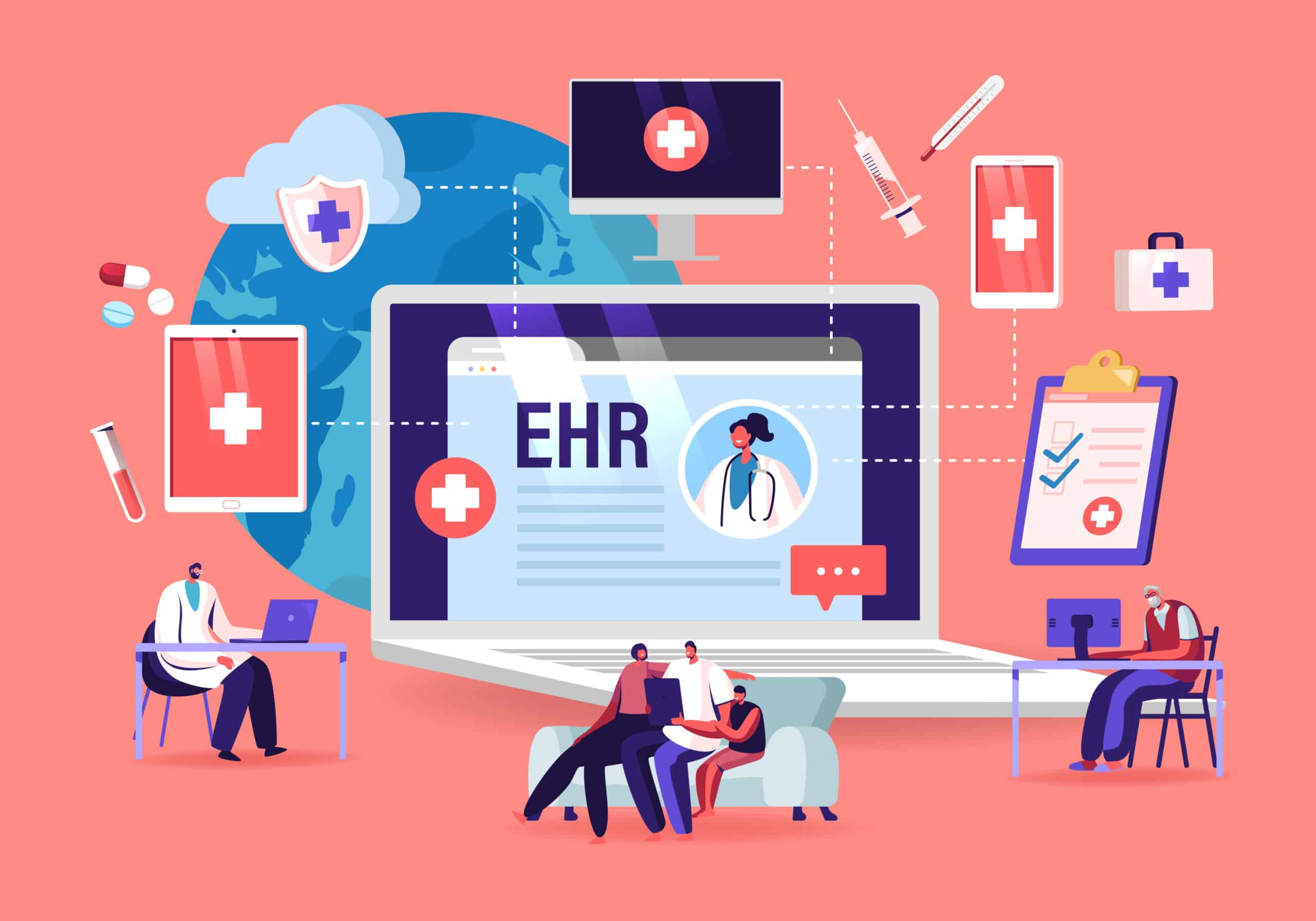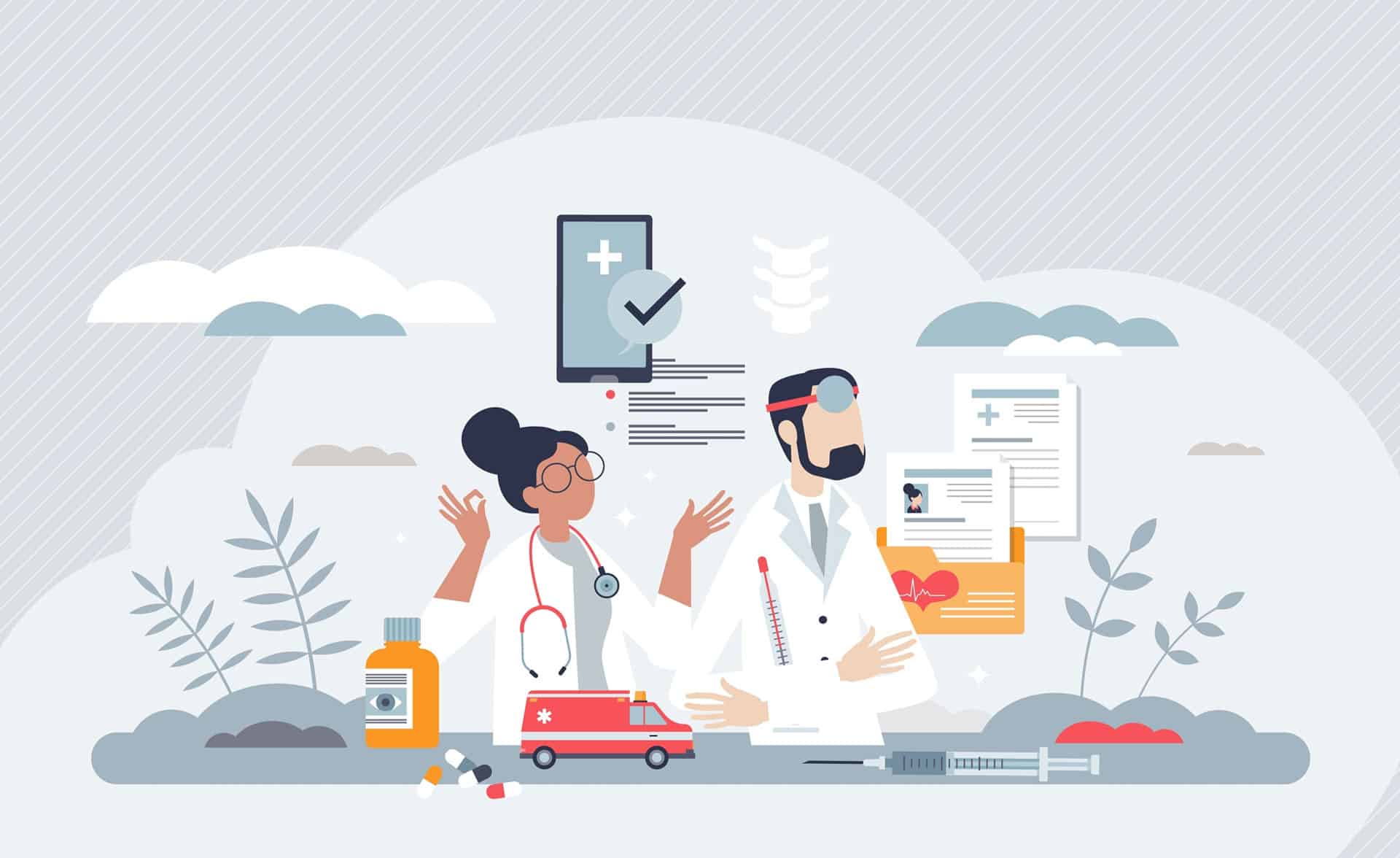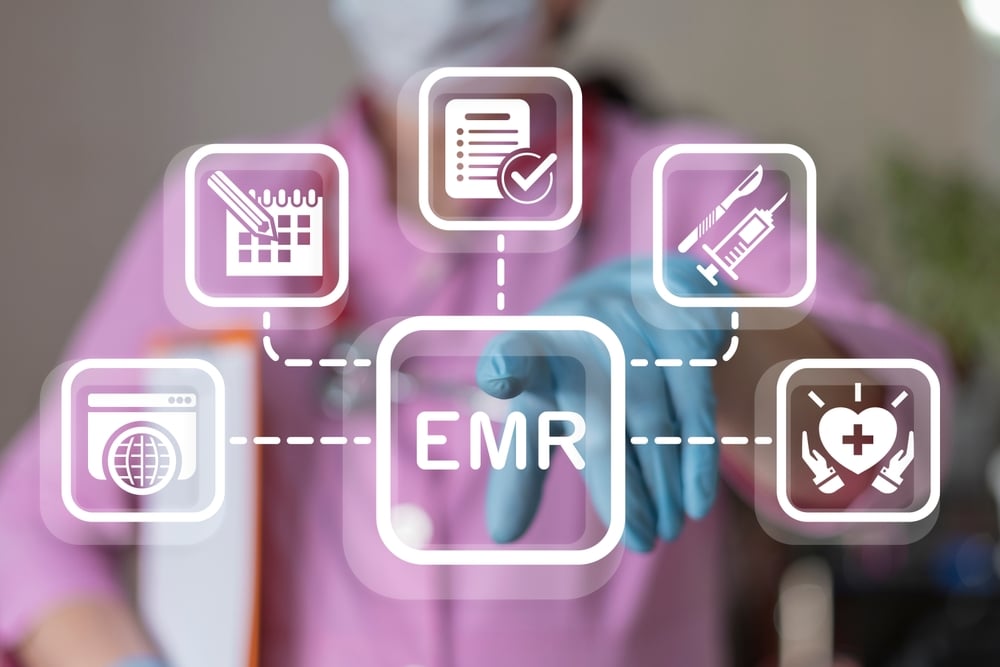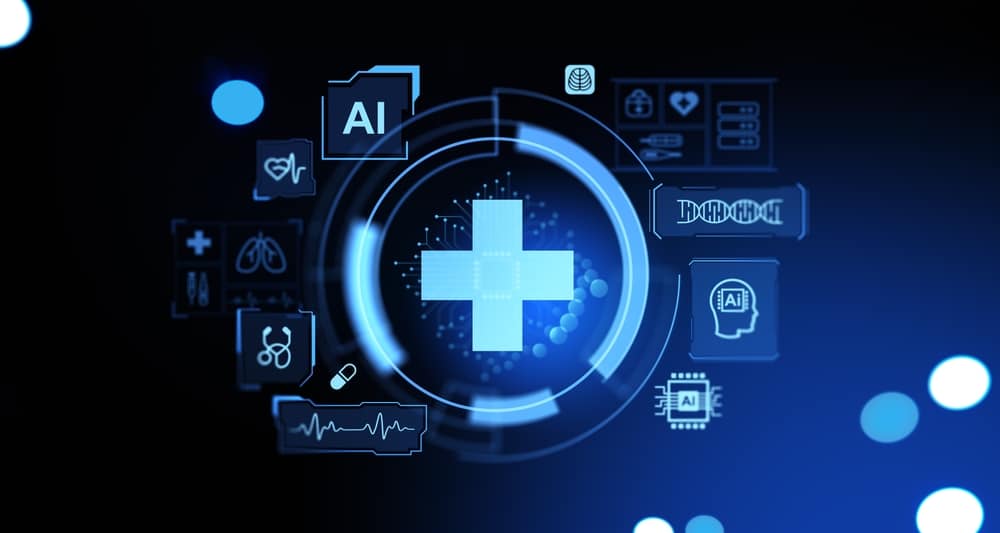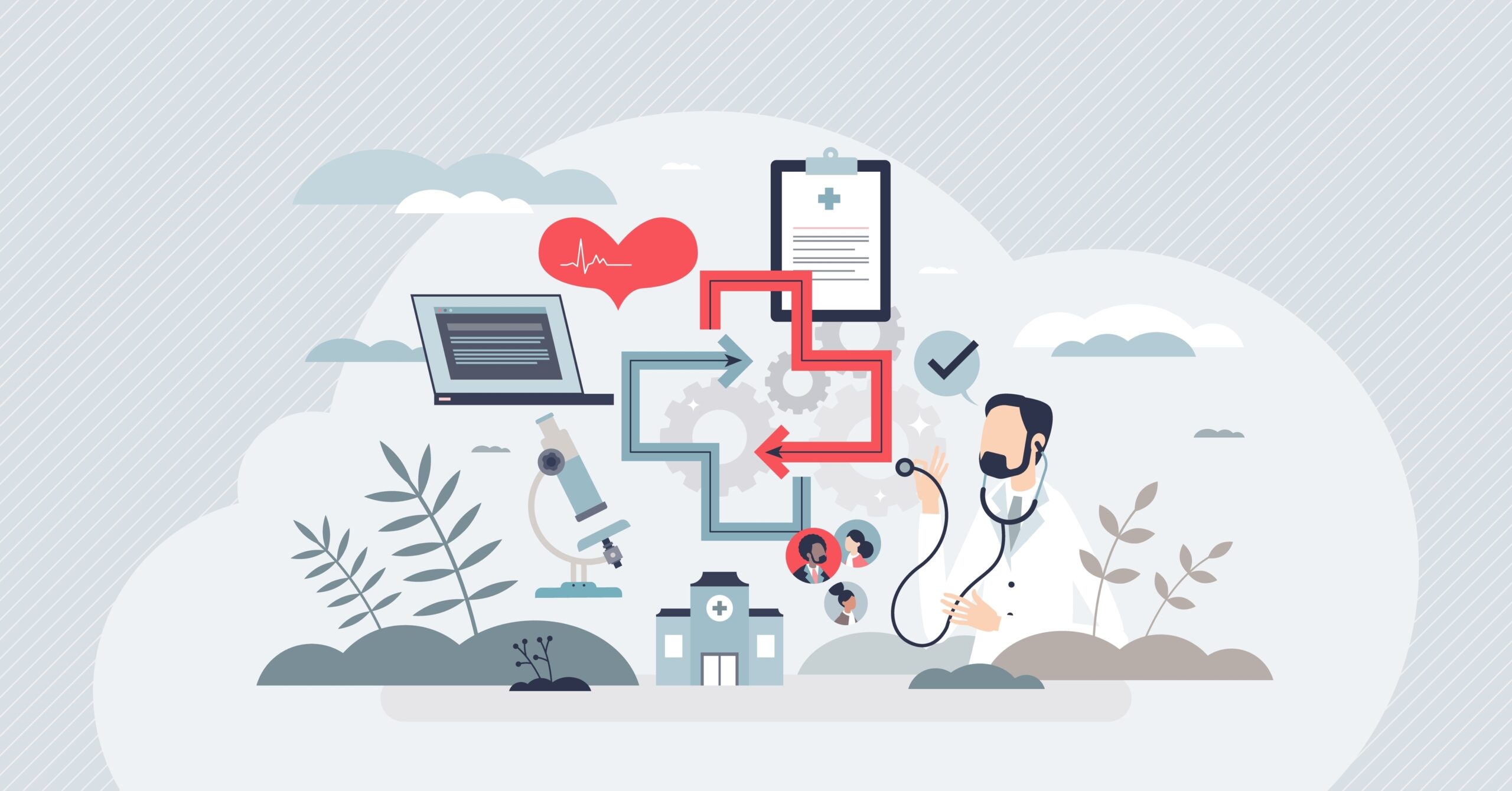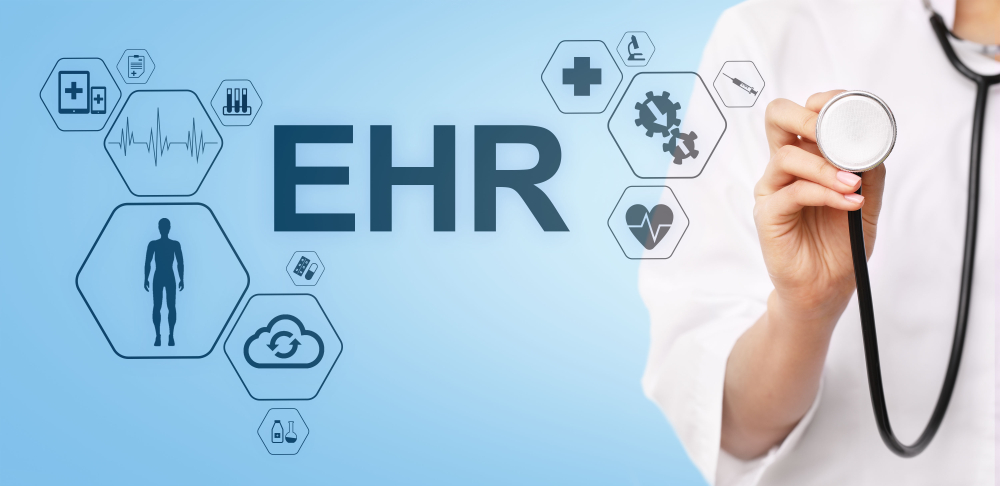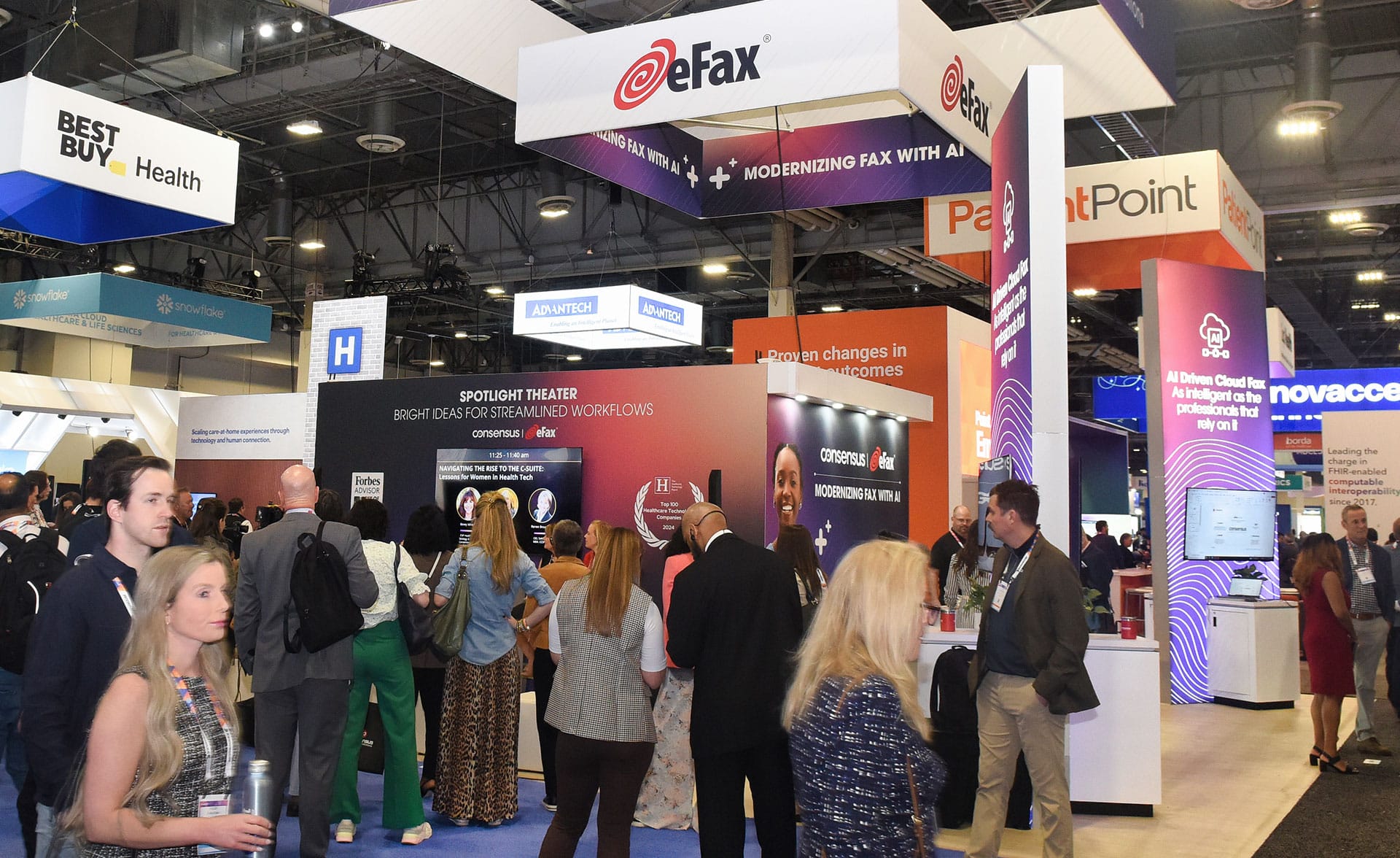Healthcare & Interoperability
The Time to Bridge Tech Inequities in Mental Health Care is Now

Digital disparities can impede communication and care across the healthcare system, and this divide is perhaps most obvious in behavioral and mental health settings. Strengthening clinical data exchange across this divide is a driving focus at Consensus Cloud Solutions, as we recognize the role of tech equity in reaching healthcare’s most vulnerable populations.
Recently, I had the chance to shine a light on these tech inequities at the HIMSS New England Chapter Spring Conference, “Beyond Boundaries: Shaping Healthcare’s Digital Future,” where I participated in a panel discussion with Todd Haedrich, CEO of Oxehealth, moderated by Brett Almquist, MBA, manager of data management reporting and applications at UMass Memorial Health.
Our session, titled “Bridging the Digital Divide: Advancing Tech Equity for Safer, Smarter Mental Healthcare,” examined how outdated and incomplete data systems have created critical gaps and inequalities across the mental health system, hindering access to equitable care. As the last session in the “Digital Health Innovations” track,” we wrapped up the sold-out event by offering some pragmatic solutions to this daunting problem.
The digital divide
Behavioral health hospitals, substance use disorder (SUD) treatment centers and mental health clinics, alongside other post-acute care settings, were left out of previous health IT incentive programs. These facilities didn’t receive meaningful use funds as part of the HITECH Act which enabled other providers and specialties as well as larger institutions, to implement sophisticated EHR systems to exchange patient information. It’s a key reason why more than 80% of hospitals have implemented an EHR, while only 6% of behavioral health facilities and 29% of SUD treatment centers have that same luxury.
Without structured data systems that support interoperability, these facilities have struggled to catch up with the current pace of technology. Many of them still capture data on paper, creating hundreds of pages of handwritten notes for each patient admission, which must then be manually entered into digital format before they can be shared with other providers.
The result? Providers are left hunting through volumes of records to find medications, diagnoses and symptoms when patients are transferred from one care setting to the next—significantly disrupting continuity of care.
These disruptions and delays can lead to poorer outcomes and higher costs. For example, if a mental health patient misses even a single day of medications for managing depression, anxiety, bipolar disorder or other mental illness due to information gaps, the repercussions can be immediate and severe. Readmission rates are twice as high for behavioral health patients (20.4%) as for patients without behavioral health issues (10.5%)
Consensus Cloud Solutions bridges the gap
The federal government’s efforts to bridge this digital divide have only widened the gap that began with the HITECH Act—highlighting the tech inequities that lead to mental health disparities. For example, the government is advancing interoperability initiatives to enable seamless clinical data exchange through the TEFCA framework, which responds to a query for patient encounter data and uses structured FHIR resources to share patient records*.
Unfortunately, these proposed solutions are still very expensive for SUD treatment centers and small clinics already operating on low margins. Based on my conversations with leaders at these facilities, forcing them to invest in TEFCA and FHIR capabilities would essentially push them out of the system because they don’t have the financial or IT resources needed to implement these technologies.
Because so much behavioral health data is captured in unstructured, paper-based formats, these facilities need more practical, affordable ways to digitize and exchange their data without expensive tech investments. One of the most promising and pragmatic solutions for bridging this digital divide is to leverage an existing technology that the majority of healthcare providers are already familiar with: digital fax. In fact, 63% of healthcare providers today rely on fax to share patient information, with even higher usage (71%) among smaller practices.
eFax Unite™ by Consensus is a powerful platform designed to streamline clinical workflows and improve communication for behavioral health organizations. By centralizing all major forms of patient information sharing in a highly connected, web-based, and HIPAA-compliant inbox, eFax Unite eliminates the need to switch between different digital platforms. It pairs cloud-based digital fax with Direct Secure Messaging protocols, enabling easy and seamless exchange of patient records between different systems and providers.
Furthermore, it allows users to query patient data through easy indexing with networks like Carequality and CommonWell Health Alliance, providing a more comprehensive and readily available pool of digitized and centralized data. This ultimately overcomes delays associated with manual workflows and allows healthcare professionals to prioritize faster, more efficient patient care.
To see how cloud-based solutions from Consensus can bridge the digital divide in behavioral health data sharing, request a demo.
* Requires your EHR to be enabled for Carequality, CommonWell and/or TEFCA





